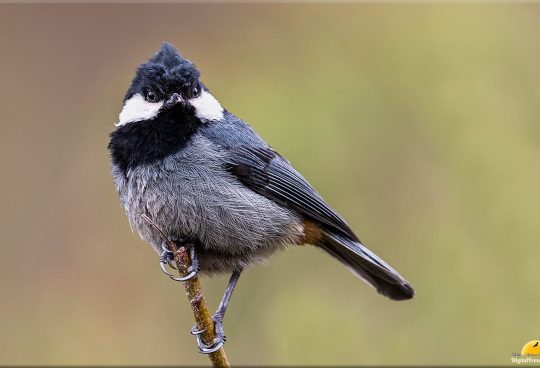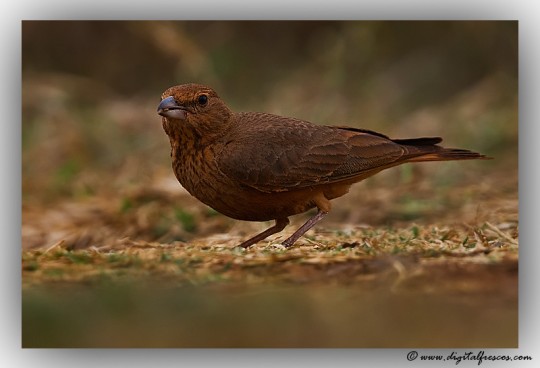The blond-crested woodpecker (Celeus flavescens) is a species of bird in the family Picidae, the woodpeckers, piculets and wrynecks. It is found in Brazil, southeastern Paraguay, and extreme northeastern Argentina. A small disjunct population occurs at the Amazon River mouth and upstream, including the southern part of Ilha de Marajo. The ochre-backed woodpecker is sometimes considered a subspecies. The striking Blond-crested Woodpecker sports a bushy, pointed crest that gives the bird a “big-headed” look. Males also have a bright red malar (cheek) patch. Blond-crested Woodpeckers eat fruits and berries, making this bird an important seed disperser. But like other members of the genus Celeus, including the Kaempfer’s Woodpecker, the Blond-crested Woodpecker primarily eats tree ants and termites. Like other woodpeckers, the Blond-crested Woodpecker has zygodactyl feet, with two toes facing forward and two back. This foot arrangement, along with specialized central tail feathers that act as props, are practical adaptations that for birds that spends much of their time clambering up and down tree trunks. The species appears to be an important pollinator of Spirotheca passifloroides, an endangered canopy tree of Brazil’s Atlantic forest. The trees bloom in the austral winter, with small, red flowers that provide large amounts of nectar relished by the birds.
In another fascinating behavior, Blond-crested Woodpeckers often make their nests near the nests of arboreal ants—the same ants that make up a large part of their diet. Apparently the proximity of the ants deters potential predators, providing some protection to the helpless woodpecker hatchlings. The woodpeckers and ants seem to be able to co-exist peacefully, at least for the duration of the nesting season. In eastern and southeastern South America, the blond-crested woodpecker ranges in eastern and central portions of the cerrado; it is also in most of the caatinga. A small range of the bird, (disjunct), occurs at the mouth of the Amazon River and upstream for 800 km in the Amazon Basin; the range also covers the southern parts of Marajó Island.Its natural habitats are subtropical or tropical moist lowland forests, subtropical or tropical dry shrubland, and heavily degraded former forest. It is not globally threatened and is concerned least concern by IUCN.
![]()






Sorry, the comment form is closed at this time.